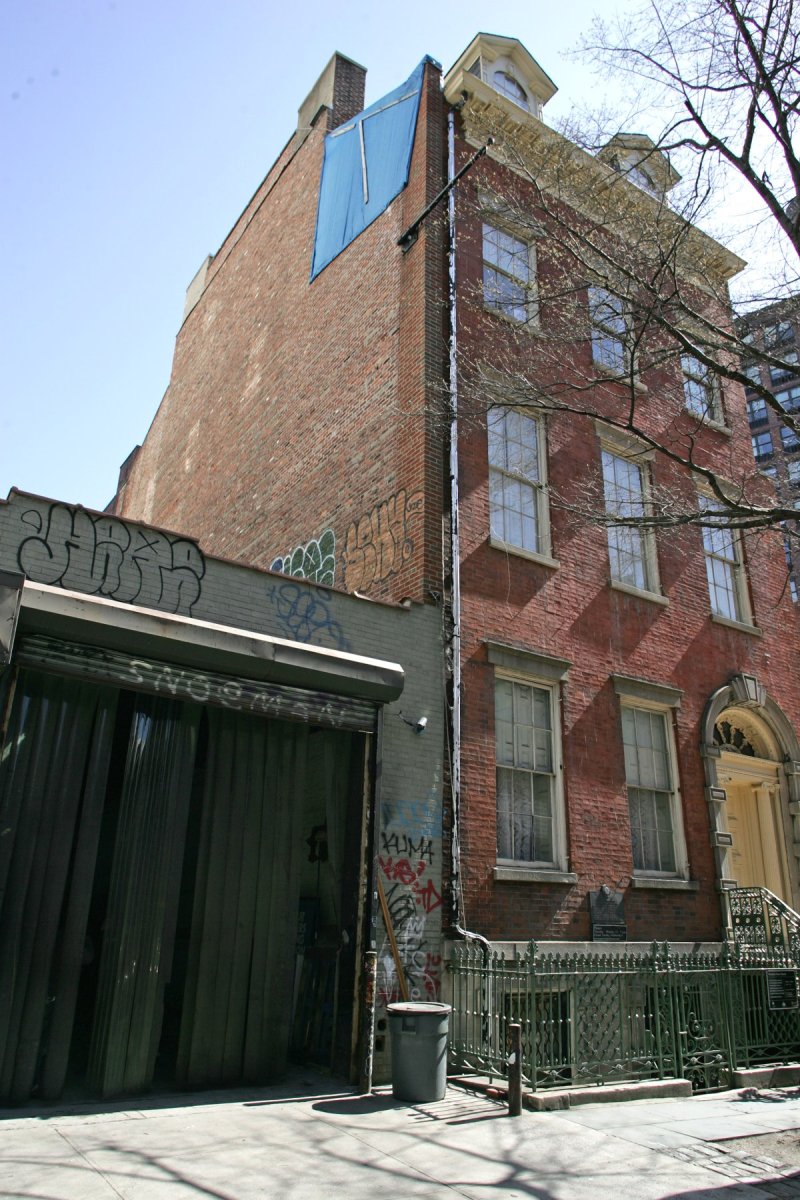The Landmarks Preservation Commission recently approved a project that includes construction of a 7-story office building directly adjacent to the Merchant’s House Museum in Downtown Manhattan. If the project were to proceed, Merchant’s House would almost certainly sustain severe, irreversible damage that could include structural compromise and eventual collapse. This decision represents a disturbing trend by the Commission, which has been frequently defying its mandate to protect vulnerable buildings. Unless the Adams Administration and its Buildings Department step in, we will lose this vital part of New York’s history forever.
Merchant’s House was built in 1832 and, notwithstanding its reliance upon early-19th century construction methods, has managed to survive and, to this day, remains largely in its original, pristine condition. It still has its original historic plaster walls and ceilings, flooring, and furnishings, and stands as an authentic tableau of New York City life in the mid-19th century. Given its remarkable state of preservation, in 1965, the Commission designated Merchant’s House the first City landmark in Manhattan. In 1981, its interior was separately designated a landmark by the Commission. Merchant’s House has also been recognized by the State and Federal governments, having been listed on the National Register of Historic Places and designated a National Historic Landmark. Thus, Merchant’s House is among the very few historic properties in New York that is recognized inside and out by the City, State and Federal governments. In other words, Merchant’s House is no ordinary landmark. Indeed, it is among the most precious structures in New York City.
Preservation enthusiasts from around the world regularly travel to New York City to pay tribute to Merchant’s House. Students throughout the City visit weekly for historical and cultural enrichment. In every conceivable sense, Merchant’s House is a landmark preservation success story. However, all of that changed when the Commission abdicated its primary responsibility – landmark preservation – in favor of a plan proposed by a well-connected real estate developer to erect yet another non-descript commercial office building.
The Commission approved the developer’s plan despite the fact that three nationally recognized engineering firms unanimously concluded that the particular method of excavation that the developer seeks to deploy would cause Merchant’s House to sustain massive and potentially catastrophic damage. Several Commissioners agreed with this assessment, leading one to concede: “I know from my experience that if you put piles in, and you have a plaster building next to it, it’s going to crack. No doubt.” Yet stunningly, the Commission voted to approve the project anyway. The Commission’s action is all the more puzzling given the structural damage sustained in 1988, when work was performed on another adjacent property (i.e., on its other side), resulting in its closure, off and on, for nearly three years.
The Commission should always be guided to preserve landmark-protected properties and assets. Historically, when confronted with an application in which design professionals on behalf of the applicant have proclaimed that proposed work would not adversely affect a neighboring landmark, the Commission has tended to give them the benefit of the doubt. However, where the applicant’s showing has been rebutted by reputable design and engineering professionals who conclude that a proposed project would cause irreversible damage to an adjacent landmark, as was the case here, the balance typically weighed heavily against granting the application. Now, apparently, a documented threat of irreversible damage is no longer a reason to deny an application.
In the last 14 months, the City has lost multiple historic properties to neglect and adjacent construction. These include 14 Gay Street and 10 Fifth Avenue, both landmark-protected properties. The Commission and Department of Buildings approved the adjacent construction at both sites, and, as a result, two historic properties will never be the same. Regrettably, these two examples are representative and not exhaustive.
From our experience on the Commission generally and with respect to Merchant’s House in particular, we are forced to conclude that the risk of irreversible damage to Merchant’s House warranted denial of the application by the Commission. Now that the matter is before the Buildings Department, it should deny the application for building permits adjacent to Merchant’s House based upon risk of collateral construction damage. And, in view of the recent losses of other historic structures throughout the City, the Mayor’s Office should promptly appoint an independent commission to study how best to avoid yet additional losses of landmark-protected properties going forward. The Landmarks Law requires nothing less.
Adi Shamir Baron served as historian on the Landmarks Preservation Commission from 2014 – 2023.
John C. Gustafsson served as the Staten Island representative on the Landmarks Preservation Commission from 2014 – 2023.
Read more: Op-Ed: Improving Support for NYC Migrants




































